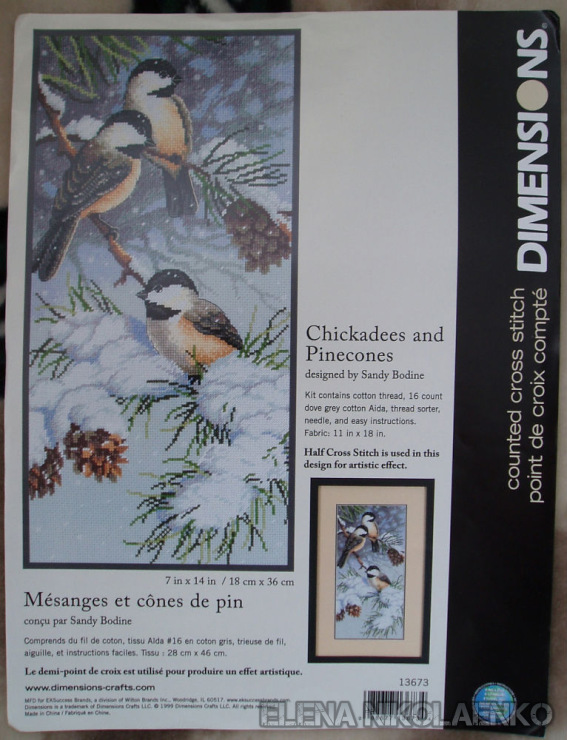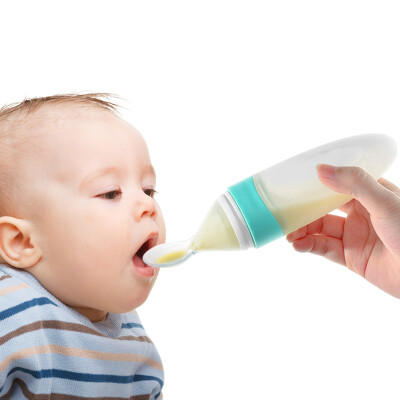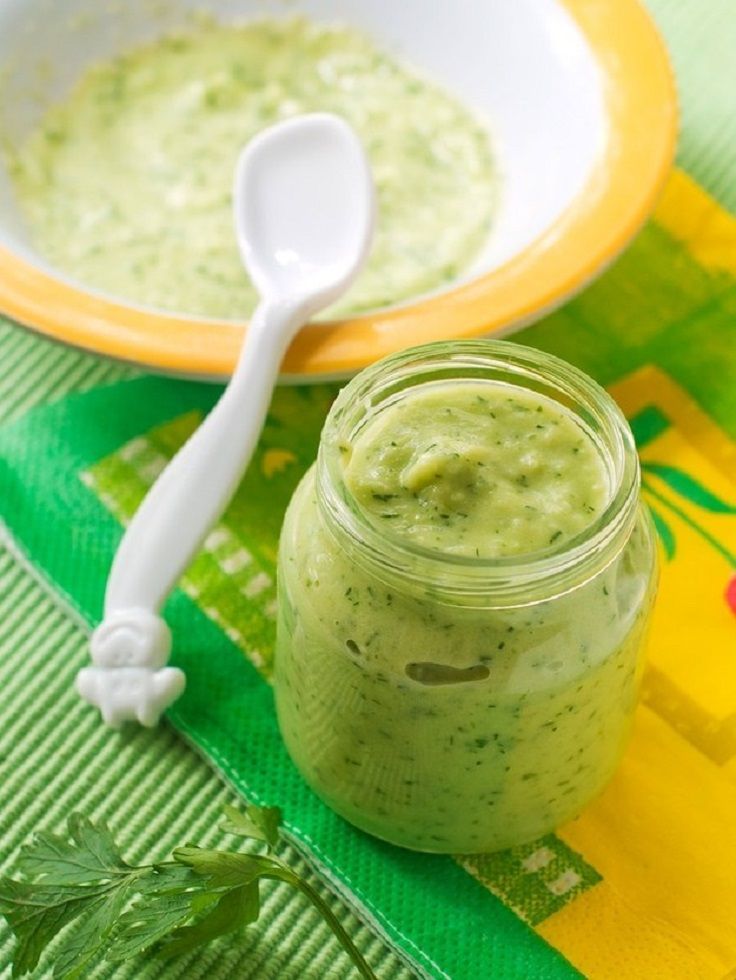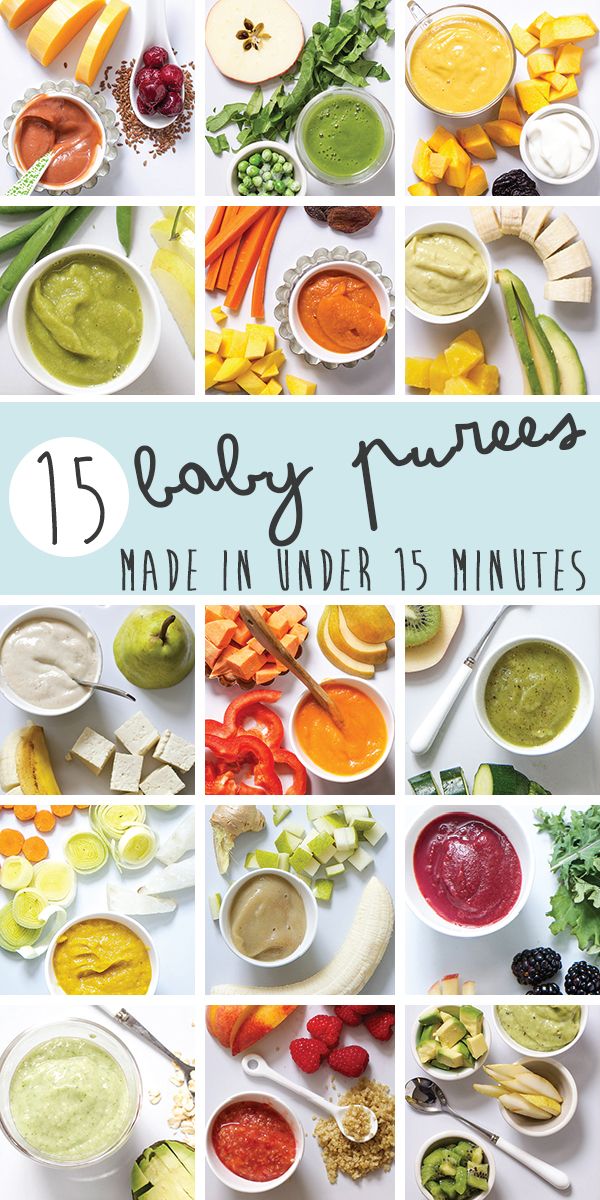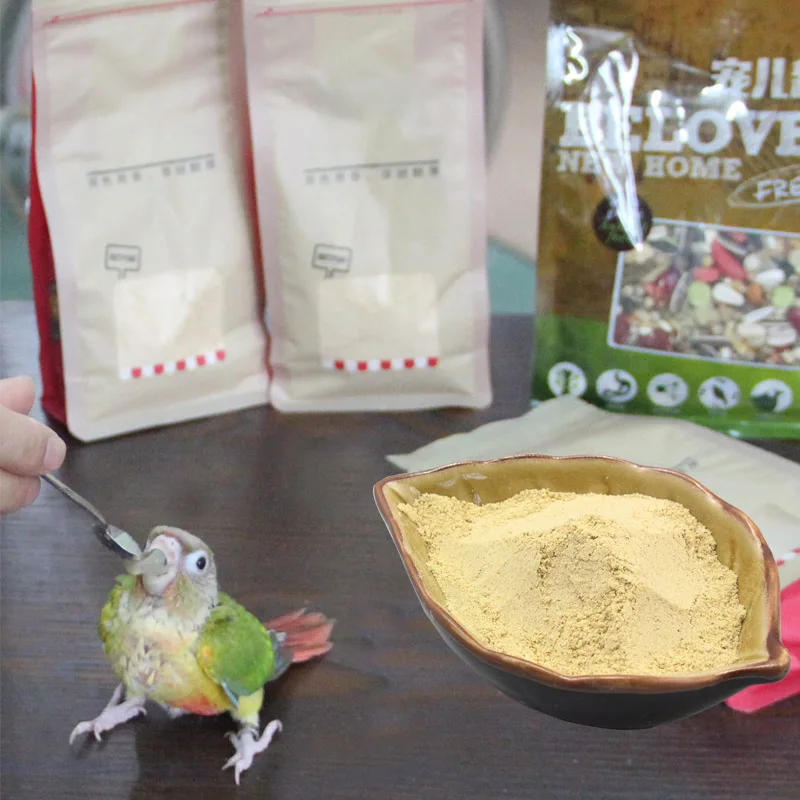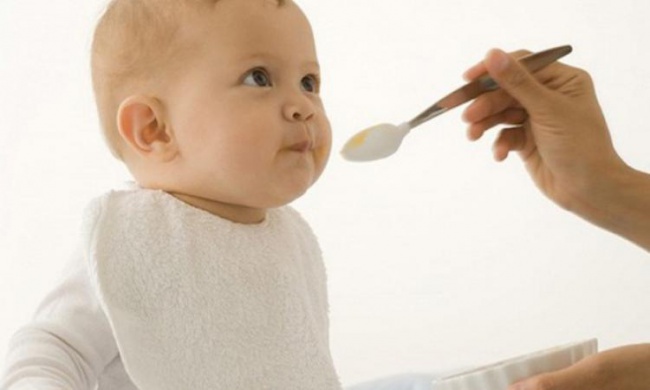Feeding baby chickadees
What Do Baby Chickadees Eat?
Chickadees can provide hours of entertainment if they’ve set up a nest near your home. Watching these minuscule birds fly back and forth all day, bringing food to their chicks, is immensely satisfying. Whatever they’re feeding those babies, there must be an inexhaustible supply of it, because they feed them a near-constant stream of food for weeks on end. So what do baby chickadees eat?
What Do Baby Chickadees Eat?
Bugs, bugs, and more bugs. Caterpillars, worms, spiders, flies, and whatever else the parents can catch. It does seem like caterpillars are the favorite, though, with spiders a close second.
Like their parents, baby chickadees love to eat insects. In truth, they probably aren’t too picky about what insects they eat, and will happily swallow whatever bugs their parents bring them. Having protein and fat provided by insects is very important in the growth and development of the young chicks.
How Much Do Baby Chickadees Eat?
Since it seems like their parents never stop feeding them during the day, baby chickadees must eat a lot. In fact, it’s estimated that it takes between 6,000 to 9,000 caterpillars to raise a brood of about five chickadee chicks!
Growing birds have never-ending appetites, and they’ll keep eating as long as their parents keep bringing the food. Young chickadees are fed by their parents from hatch, throughout nesting, and even 2-4 weeks after they leave the nest. If you have a garden, having chickadees nesting nearby must be a huge help since they’ll probably eat all the insect pests before you even notice they’re there.
When the babies are just hatched and need to be kept warm until their feathers come in, the male will do the majority of the food gathering. After a week, the female starts to leave the nest more and help in hunting, and by about two weeks both males and females are hunting equally.
Why Do They Eat So Many Caterpillars?
Careful observers note that caterpillars are one of the most common foods that the parents bring back for the baby chickadees.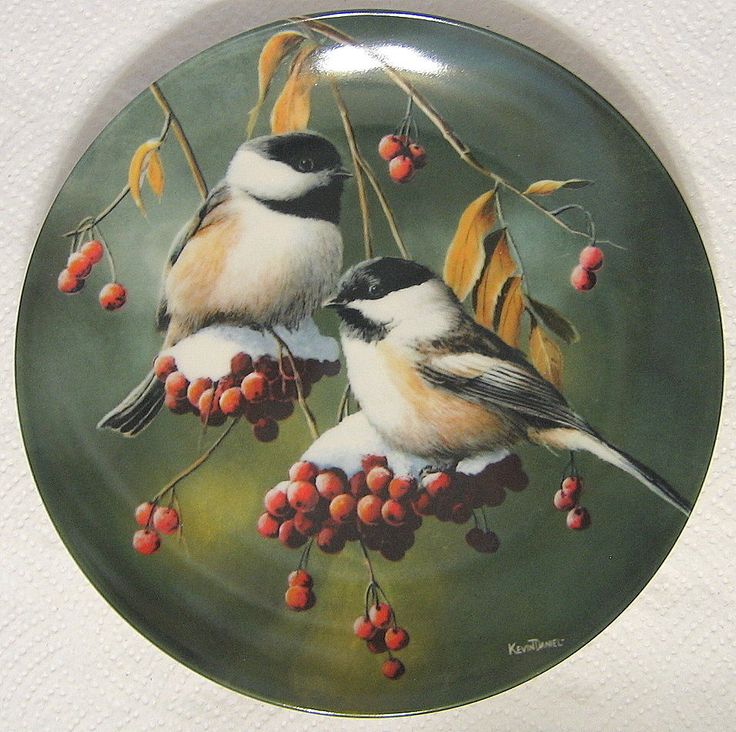 While we aren’t sure why, this probably isn’t because caterpillars are more nutritious or better tasting than other available food.
While we aren’t sure why, this probably isn’t because caterpillars are more nutritious or better tasting than other available food.
Rather, it’s mostly a coincidence. Chickadees are usually raising their chicks at the same time of year that caterpillars are out, before they’ve wrapped themselves in their cocoons and metamorphosed into butterflies. As a result, there are lots of caterpillars around, and they’re pretty easy to catch compared with lots of other insects. So, they end up becoming a big part of a baby chickadee’s diet.
Do Chickadees Eat Other Things?
Besides caterpillars, chickadees will eat just about any insect or arachnid they can catch. Spiders are another common food for baby chickadees. The parents will grab whatever they can as they try to keep up with their babies’ insatiable appetites.
Adult chickadees eat lots of insects too, but they’ll also eat fruits and seeds. They really only turn to those food sources in the fall and winter, when insects are scarce, and by that time the babies will have grown up and left the nest. That means that they only eat insects until they’re fully grown.
That means that they only eat insects until they’re fully grown.
How Do Chickadees Catch So Many Bugs?
Chickadees are small and fast, just like the insects they eat. They’ll sometimes catch them in the air, but more often they hop along tree branches looking for easier prey like caterpillars. They’ve even been known to hang upside down from the branches while they hunt.
You’ll often see adult chickadees with multiple bugs in their beak. Since their chicks can eat almost non-stop, they often grab as many bugs as they can fit in their mouth on each trip. They’ll keep hunting along the tree branches until they either can’t find any bugs or can’t fit anymore in their mouth, and then they’ll head back to the nest.
How to Feed Baby Chickadees
If you need to feed a baby chickadee, use a mixture of moist dog/cat food, wet/soggy rice cereal and hard boiled egg yolk. Dilute all with water and mix to a paste and feed through an eye dropper. However in general you should not attempt to do this yourself, and we will talk about why below.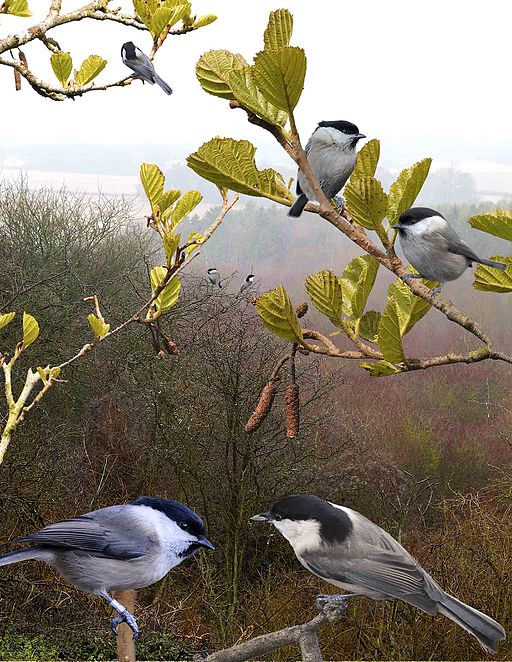
Don’t assume a nest with baby chickadees with no visible parents has been abandoned. In most cases, the adults are nearby finding food and will come back periodically to feed the young. Sometimes feedings can be quick, and the adults will only stop by for a minute before leaving to find food again. Because you could easily miss this quick process, you would have to watch a nest non-stop (not a few minutes at a time) for at least a few hours before you could determine if the babies have potentially been abandoned.
Contacting a Wildlife Rehab Expert
If you have determined that the parents are not returning, it is important to contact a qualified bird rehabber. In many states, only certified rehab specialists are allowed to be in possession of wild birds. Not to mention they are trained in exactly how to care for each species.
Care of baby birds can be very time consuming and specific. Many nestlings need to be fed every 20 minutes or so for 12 to 14 hours a day! That is a lot of constant time and attention. They also need a balanced diet with enough protein and nutrients to grow properly. This is why the knowledge and expertise of a rehabber is their best bet for survival.
They also need a balanced diet with enough protein and nutrients to grow properly. This is why the knowledge and expertise of a rehabber is their best bet for survival.
If you get in touch with a rehabber that isn’t able to take the chickadees right away, they may instruct you on how to care for them until they can pick them up. To find a rehabber near you, Google search the name of your state plus “wildlife rehabilitation”, or check your states department of the environment page for a list of licensed rehabbers.
How to Attract Adult Chickadees
Since they eat so many bugs, a lot of people like to attract chickadees to their yards in the hopes that they’ll keep the insect population down. Fortunately, attracting chickadees is pretty easy. They are one of the boldest and most curious backyard birds.
A simple bird feeder will do the trick. Chickadees eat most types of seed, and especially enjoy black sunflower seeds. If there are chickadees in your area, they’ll likely find it quickly.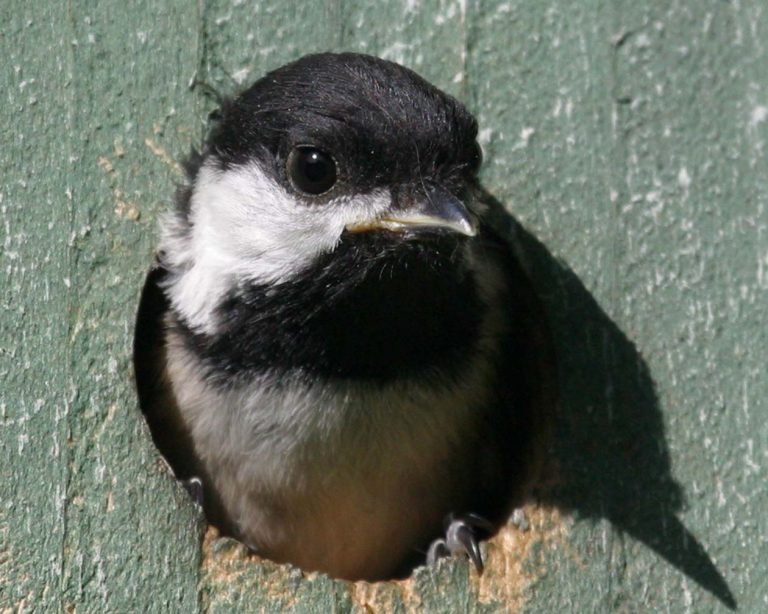
Putting up a birdhouse is also a good way to attract chickadees. Adults start to look for nesting sites toward the end of winter, so that’s when you should put up a chickadee birdhouse. That way you minimize the risk that other birds will settle in. An ideal chickadee birdhouse will have a one to one and a quarter inch entrance hole that is centered six inches above the floor of the birdhouse.
Conclusion
Baby chickadees eat a large amount of bugs, especially caterpillars. They’ll go through thousands of them before they’re fully grown, and they’ll continue to eat them as adults, even as their diet becomes more diverse.
What Do Baby Chickadees Eat? (+ More FAQs)
Chickadees may look tiny, but these birds can pack an unbelievable amount of food. They tend to feed together with their baby chickadees. If there’s a nest visible from your bedroom window, you can entertain yourself for hours as the parent chickadees bring their young ones food at a steady yet continuous pace.
Baby chickadees love eating, a habit that they inherit from their parents. They aren’t too picky when it comes to the food their parents bring them. The question is: What do they like?
Insects, insects, and more insects. According to A brood of 5 baby chickadees need around 6,000 to 9,000 caterpillars to grow into adults. That’s A LOT! the chickadee will feed flies, spiders, worms, grasshoppers, and any other insect it can fit in its mouth to its babies. Though they mostly prefer caterpillars, all insects are up for grabs.
Now that you know what baby chickadees prefer to eat, let’s take an in-depth look at the variations on their diet and how they survive:
Navigation
- 1 Diet Variations
- 2 Eating Habits of Chickadees
- 3 Wrap-Up
Diet Variations
Baby chickadees are omnivores. They will eat everything and anything, even if it is not included in their diet. Domestic baby chickadees will also eat rusk crumbs, cookies crumbs, bread, and other human foods.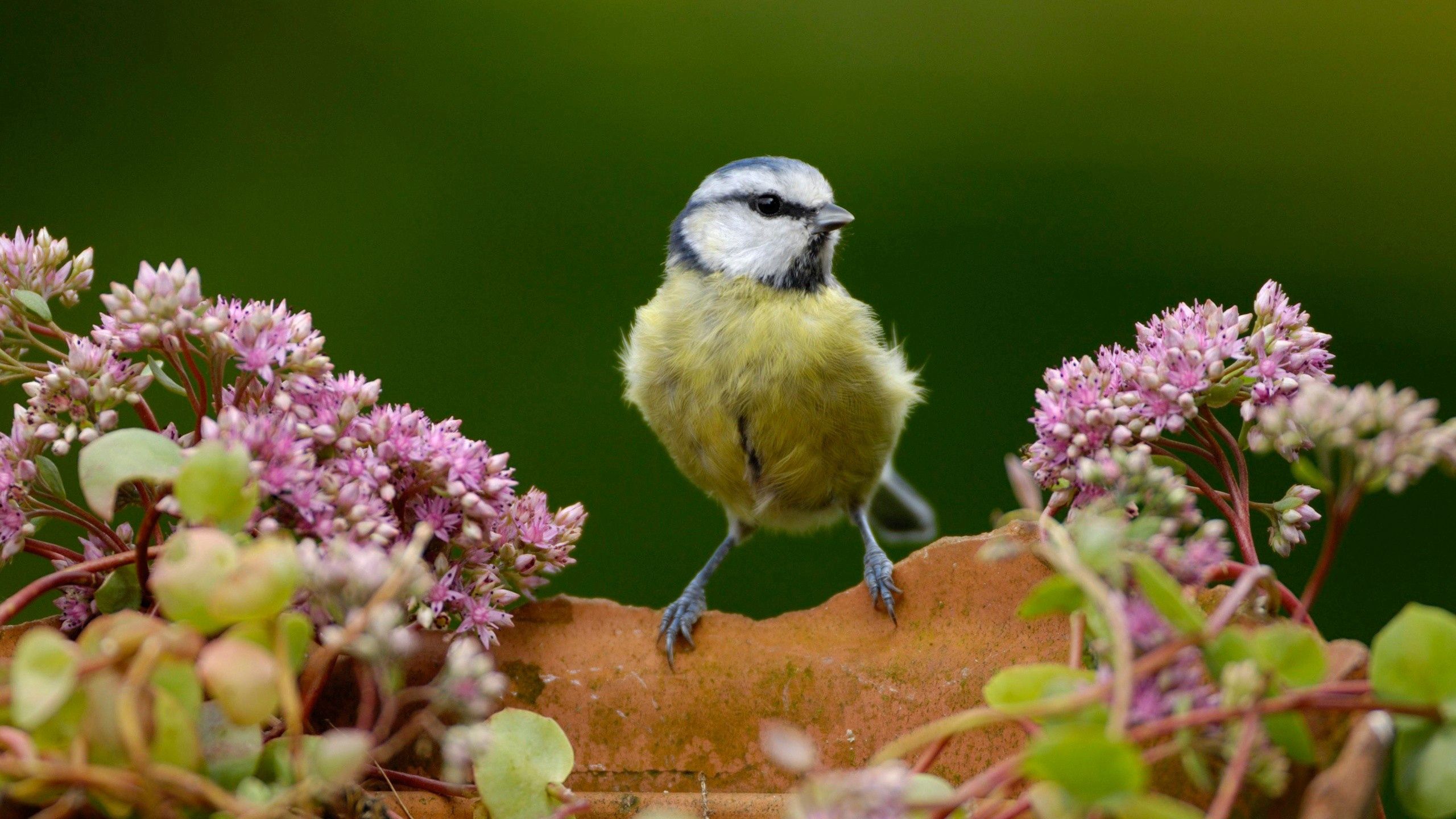 However, we do not recommend giving baby chickadees these foods because they contain many preservatives and unhealthy ingredients for birds.
However, we do not recommend giving baby chickadees these foods because they contain many preservatives and unhealthy ingredients for birds.
Hence, chickadees usually feed insects to their young ones. A baby chickadee is around 2 in. to 3 in. long. It has no wings or feathers present when it is born. On average, a baby chickadee weighs 5 grams to 10 grams. Once the baby chickadees leave their nest, they look for a flock to blend in. Here’s what they eat before they can be on their own:
Seeds
Baby chickadees love seeds. They are particularly fond of hulled sunflower seeds, striped sunflower seeds, and black oil sunflower seeds. They also eat chopped or shelled peanuts. You can also add safflower seeds, millet, cracked corn, and nyjer to feeders.
Fruits
Baby chickadees have a sweet tooth. Berry bushes are their favorite! They love blueberries, cut grapes, raspberries, strawberries, bilberries, cranberries, and bilberries. They also eat cut pawpaw, pear, orange, and apple.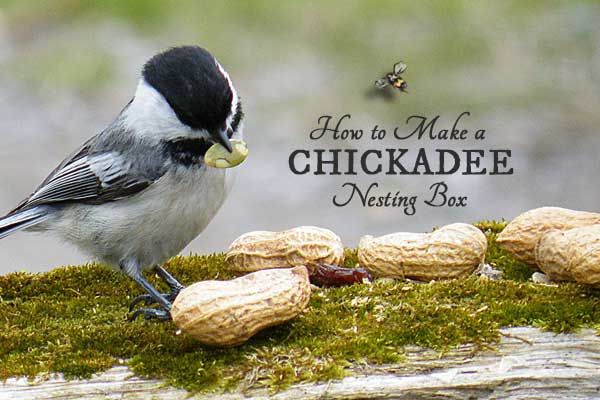
Insects
The list of insects baby chickadees eat is quite long. It includes flies, caterpillars, snails, spiders, grasshoppers, mealworms, moths, earthworms, crickets, and other invertebrates.
Carrion
Baby chickadees eat both animals and plants. Though, they don’t consume much when it comes to meat. They do it when food is scarce, and even then, they look for dead animal flesh.
Suet
Baby chickadees love suet too. Suet refers to the raw fat of beef or lamb. It has a lot of nutrients that keep them energetic and healthy.
Eating Habits of Chickadees
In a domestic setting, avid bird watchers usually hang bird feeders with insects, fruits, and seeds. Unlike other birds, chickadees are not picky. They will eat dry food such as dead insects as well. Once you set up the feeders, chickadees will schedule their visits to the backyard to eat food and carry as much as they can in their mouths. Don’t forget to add a birdbath nearby so that they can lounge in the backyard after eating.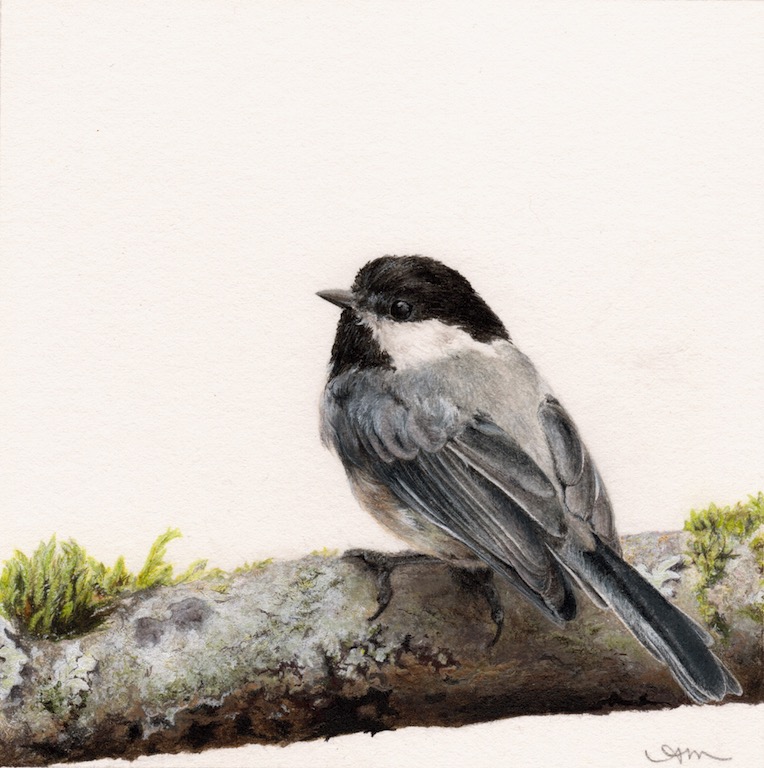
In the wild, chickadees eat whatever they can find. Since they eat what they can grab, they don’t leave any insect if given the opportunity. They are also fly over crop farms for sunflower seeds or any other seeds they can spot. If worst comes to worst, they feed on meat from carcasses. No matter the food type, if it can fit into their mouth, they will carry it to their babies.
Why Do Baby Chickadees Love Caterpillars?
Yes, parent chickadees feed their young ones caterpillars mostly. However, this is not because caterpillars are better tasting or nutritious. It’s all coincidence. The time of year when chickadees are raising their babies happens to be the same time when caterpillars are out before wrapping themselves in cocoons and turning into butterflies. Hence, chickadees can catch these insects and also because they are extremely slow. This makes them an easy catch compared to other insects.
What Other Things Do Baby Chickadees Eat?
We have already talked about how baby chickadees mostly prefer insects, but they also like to eat something sweet from time to time.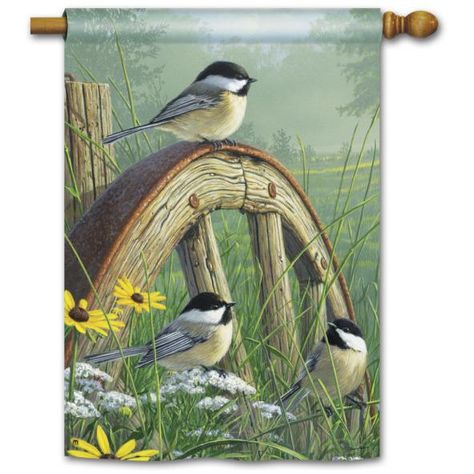 Baby chickadees are insatiable, which is why their parents need to feed them constantly. They also like seeds and fruits, which they seldom turn to only in winter and fall when there are no insects around. Depending on the season the parents are raising them in, it’s possible that the baby chickadees only get to eat insects when they are all grown up.
Baby chickadees are insatiable, which is why their parents need to feed them constantly. They also like seeds and fruits, which they seldom turn to only in winter and fall when there are no insects around. Depending on the season the parents are raising them in, it’s possible that the baby chickadees only get to eat insects when they are all grown up.
How Much Do Baby Chickadees Eat?
A LOT, and by that, we mean more than you can imagine! During the day, parent chickadees keep feeding the babies with a constant stream of food. It takes around 6,000 to 9,000 insects or caterpillars to raise around five chickadees. The appetite of all growing birds is never-ending. Parents feed their young ones from the moment they hatch and even 2 to 4 weeks after the young chickadees leave the nest.
How Are Chickadees Able to Catch So Many Insects?
Chickadees are quite small due to their small body. They are even able to catch insects mid-air. However, mostly they hop on tree branches in search of caterpillars. You might even spot them hanging upside down when they are hunting. Chickadees usually grab multiple insects in their beak to lessen their trips. They keep hunting until they can’t find any insects or run out of room to carry them in their mouth.
You might even spot them hanging upside down when they are hunting. Chickadees usually grab multiple insects in their beak to lessen their trips. They keep hunting until they can’t find any insects or run out of room to carry them in their mouth.
What to Feed Baby Chickadees?
Chickadees might abandon their babies if they feel that predators or competitors have disturbed their nest. Usually, chickadees create a nest in the backyard and monitor it well. If you see chickadees in a nest unattended for a long time, you can feed them wet dog food or cat food or mushy cereal mixed with water.
Wrap-Up
Baby chickadees love all types of insects. They are not too picky about the food they eat, which is why they can also survive on fruits and berries. When food is scarce, chickadees turn to dead animal flesh to feed their young ones.
If you are setting up bird feeders in the backyard for chickadees, fill them with worms, caterpillars, and other insects, as well as sunflower seeds.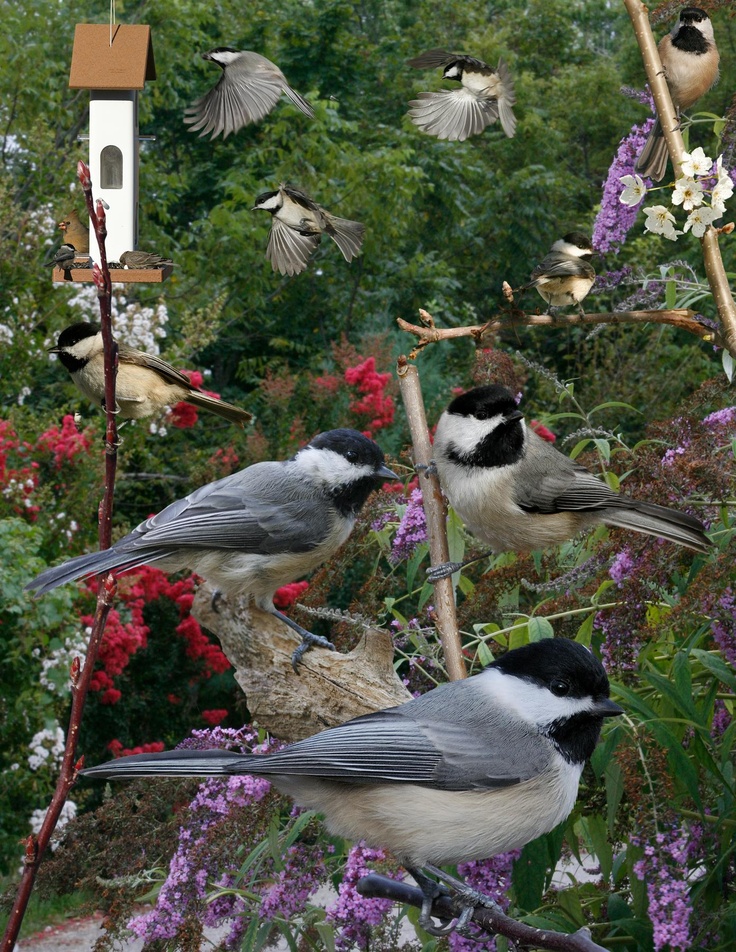
What can be fed to titmouse. How to feed titmouse - nutrition of titmouse
Contents
- What can be fed to titmouse. How to feed titmouse - nutrition of titmouse
- Peculiarities of the diet of titmouse
- Allowed products for titmouse
- Prohibited products for titmouse
- Feeding titmouse in summer
- Feeding titmouse in winter
- Life of titmouse
- How to feed titmouse and other birds in winter
- How to feed birds in summer. Should I feed the birds in summer?
- What to feed little titmouse. How to feed chicks picked up by children on the street
- Chick schedule
- Chick menu
- Swallows are not returned to the wild
- How to feed tits at home. LET'S FEED THE TITS
- What does a chick look like. Tit chick: what does it look like and how to feed it?
- What grains can be fed to titmouse. What is recommended to feed tits in winter
- Bird feeders
- Optimum bird diet
- Prohibited food
- Permissible seeds and cereals
What can be fed to titmouse.
 How to feed titmouse - feeding titmouse
How to feed titmouse - feeding titmouse Beautiful birds are pleasing to the eye in winter, and in summer they fight insects. Small yellow bellies delight children and adults. What to feed the titmouse so that you can once again admire the winged creatures?
Features of the diet of tits
When they start feeding birds, the question arises, what do tits eat. The composition of the diet includes:
- Vegetable food - cereals. Oats, pearl barley, hercules are the basis of bird nutrition. Sunflower seeds are also used.
- Animal feed. Insect eggs, lard, meat products, cottage cheese (as a source of protein).
- Vitamin food. You can beautifully feed the tits in the feeder with the help of fruits, berries (dried and fresh, strung on a thread).
Allowed foods for titmouse
The most popular food for titmouse is seeds. But what else can you feed besides them? Simple solution: buy parrot food. The bird will be very happy with the treat.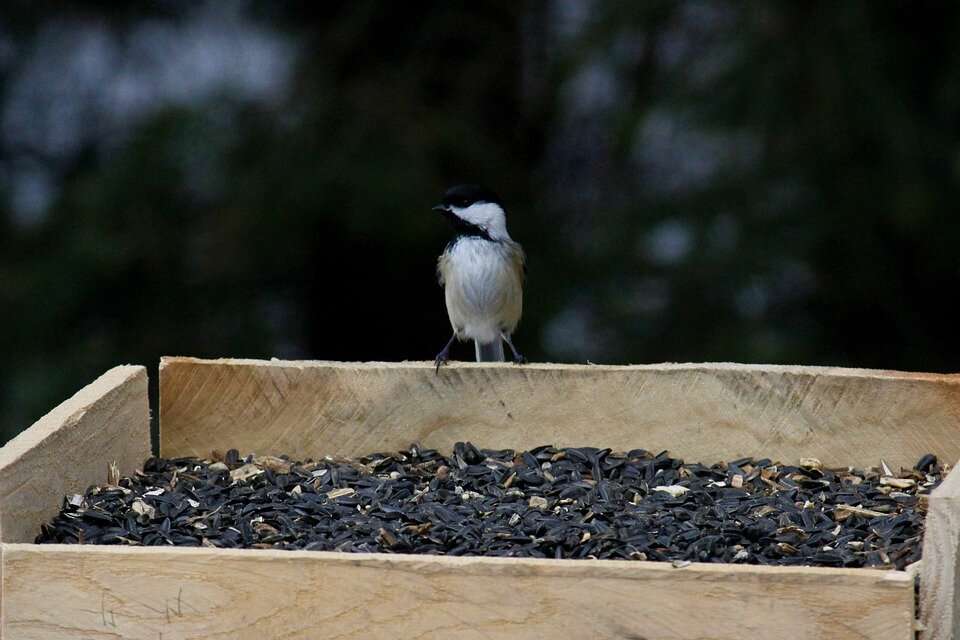
If you don't know which cereal to choose, pay attention to the following types:
- millet;
- oats;
- millet;
- wheat;
- fig.
From animal products, tits can be fed in the city:
- eggs;
- cottage cheese;
- unsalted lard;
- sausage.
Among vitamin feeds, they can be offered dried fruits and berries.
Prohibited products for tits
Do not feed titmouse in the feeder:
- Roasted sunflower seeds. Cause liver problems in birds.
- Salty foods. Causes indigestion and stomach problems.
- Damaged products . Causes indigestion.
- Bread. It swells in the goiter and begins to ferment, causing the death of the bird.
Controversial questions often arise as to whether it is possible to feed millet tits, because toxic substances accumulate on the shell of the grain. In modern conditions, this is a rarity, but if you are still afraid for the life of a bird, pour boiled water over millet to flush out toxins.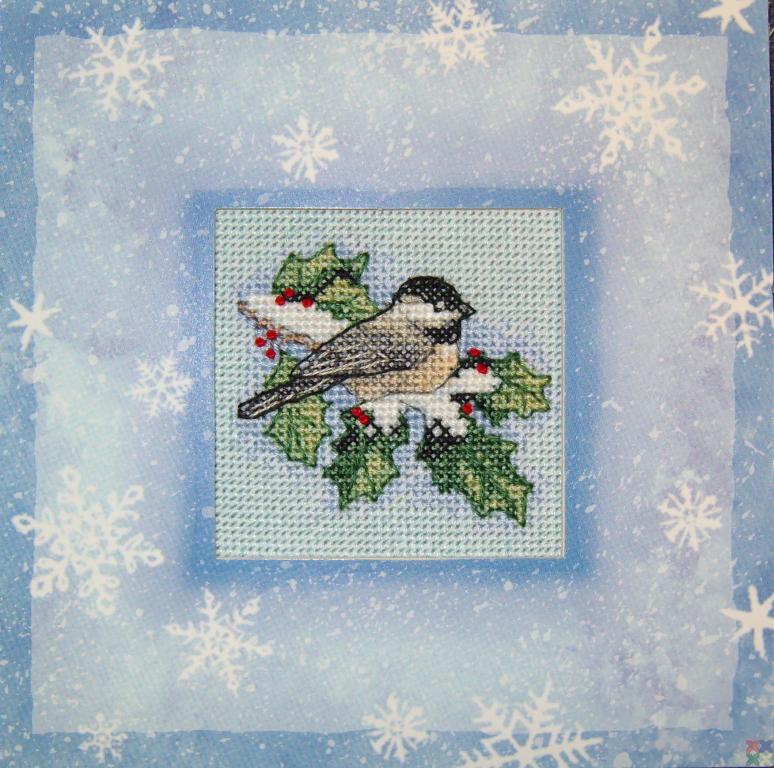
Do not feed blue citrus and exotic fruits yet. Birds have not consumed them before and therefore may die due to an allergic reaction.
Feeding tits in summer
Birds do not need additional feeding in summer, as they can get food in the form of plant seeds, insects, berries and fruits.
Feeding tits in winter
Feeding tits in winter can be up to 2 times a day. Put them in the feeder of seeds, oatmeal, millet, rice and they will be happy. You can please with cashew nuts, walnuts or cedar fruits.
In winter, the consumption of energy required for heating increases and it's time to feed the tits with fat. Choose not salty foods, but fresh ones.
You can also enjoy the "bird" pie, rich in animal and vegetable oils. To prepare it, pour a handful of sunflower seeds, pumpkins, peanuts, egg shells, dried berries with melted butter and cool. Feeding tits in winter with the resulting bar is easy and pleasant. Birds love this treat!
If you are wondering what to feed the tits, then you are a kind and responsible person. Learn to love nature in order to live in harmony with it!
Learn to love nature in order to live in harmony with it!
Life of titmouse in winter. What to feed titmouse and other birds in winter
In winter, many birds living in cities need additional food. What to feed titmouse and other birds? What can be poured into the feeders, and what will be harmful to the birds.
City birds - sparrows and pigeons are much better adapted to frost than birds that have flown into the city from the wild. According to statistics, 8 out of 10 tits die during the winter in cold weather. In sparrows or pigeons, this figure is much lower - 1-2 individuals die. That is why special attention should be paid to titmouse and other birds from the wild.
How to feed tits and other birds.
First you need to build a feeder and sow it on a tree, you can right next to the house. The feeder can be made from absolutely any material. Even juice bags, wood and more will do. The main thing is that the birds can fly into the feeder and peck at the food.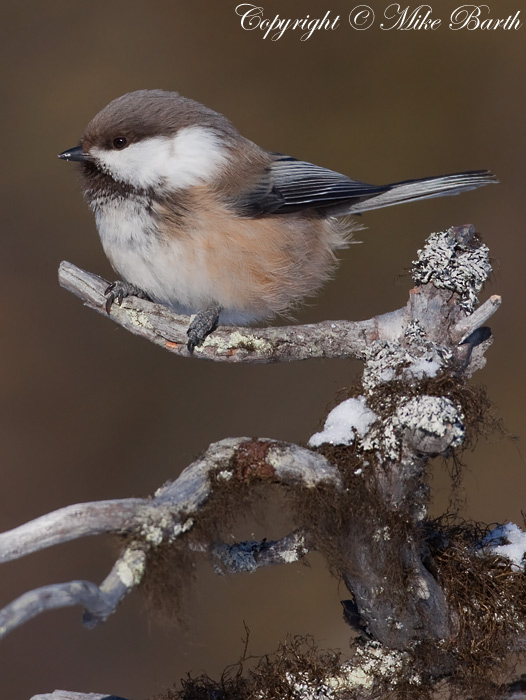
The diet of these colorful birds is different in summer and winter. In summer, tits feed on beetles, aphids, mosquitoes and midges. In winter, they switch to plant foods - seeds of spruce, birch, wheat, rye, etc.
In the city, you can feed the birds with seeds, various cereals, crushed nuts, dried berries and dried fruits. You can also buy special food for canaries and parrots. Wheat bread for tits is suitable only in the form of crackers and crumbs.
In addition to tits, other birds fly to the city, such as goldfinches, bullfinches and others. These birds should be fed in the same way as tits. After all, the stomachs of forest and field birds are quite sensitive to human food. Do not give birds salty and sweet food.
What to feed the birds in summer. Should I feed the birds in summer?
A recurring myth about bird feeding is that feeding birds in the summer makes them dependent on handouts or lazy in their search for natural food sources. This is simply not true—studies have shown that wild birds typically get no more than 25 percent of their daily food from feeders, and for many backyard species, the amount is even lower.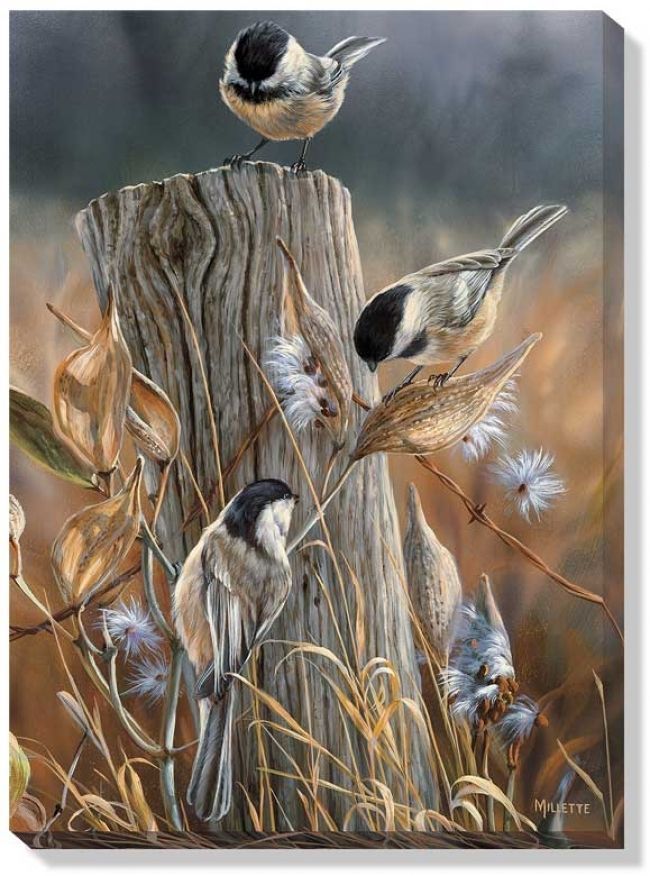 In fact, summer is the perfect time to feed the birds because...
In fact, summer is the perfect time to feed the birds because...
- Long days give the birds in the backyard more time to watch the feeders and see many different hungry visitors.
- Birds are in their plumage during the summer months making identification easier and more enjoyable with bright colors and clear markings.
- Birds raise their families by giving backyard birds the opportunity to watch the chicks mature as they learn to visit feeders.
- There are many more birds in the northern areas during the summer months, and birds that only offer food in winter will miss many amazing species.
At first, it may seem that fewer birds visit the feeders in early or mid-summer, making the season less desirable for backyard poultry. In early summer, however, many birds nest and are naturally more secretive, and although their chicks are very young, these birds only visit feeders for a short time. In addition, this is the time of year when many natural food sources - fruits, insects, seeds, etc. - become more available, reducing the use of bird feeders. Persistent birds, however, can enjoy more summer birds if their feeders are filled with nutritious treats.
- become more available, reducing the use of bird feeders. Persistent birds, however, can enjoy more summer birds if their feeders are filled with nutritious treats.
What to feed little titmouse. What to feed the chicks that were picked up by children on the street
Very often children bring chicks from the street that supposedly fell out of the nest, and begin to take care of them with tears. They arrange a nest in a box, lay it on cotton wool or rags and ask adults about what to feed the chicks that have fallen out of the nest?
Not every parent is capable of making the baby take the chick to where he brought it from, although he understands that he will have to take care of the foundling.
Chick mode
Chicks need food often, once every 15-20 minutes. It will be possible to interrupt only for a night's sleep and resume feeding should be no later than the sun rises.
What to feed the chicks depends on the type of birds they belong to.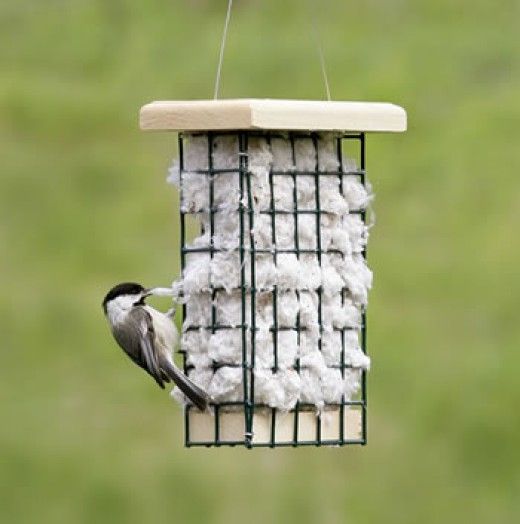 It is possible to feed a swallow, songbird, sparrow, swift, crow or dove at home. Almost all chicks can be returned to where they were found, and their parents will certainly take care of them.
It is possible to feed a swallow, songbird, sparrow, swift, crow or dove at home. Almost all chicks can be returned to where they were found, and their parents will certainly take care of them.
Only small swifts are not returned to their place. Swifts cannot help a chick that has fallen out of the nest, they cannot take off from the ground. You can distinguish a swift from a swallow by its paws - in swifts, all fingers look forward.
Chick menu
The children found a sparrow chick. What to feed the bird?
Despite the fact that adult birds peck grains with pleasure, the chicks are fed with protein food. Meal worms and live bloodworms are suitable for food, which can be purchased at pet stores, earthworms - you can dig them up yourself, flies - also caught with your own hands.
Feeding should ideally be done every 20 minutes - if not, at least once an hour. A piece of food must be pushed into the chick's beak, opening it by force. If you cannot get live food, then you need to mix pieces of egg yolk, cottage cheese and minced meat and make tiny balls.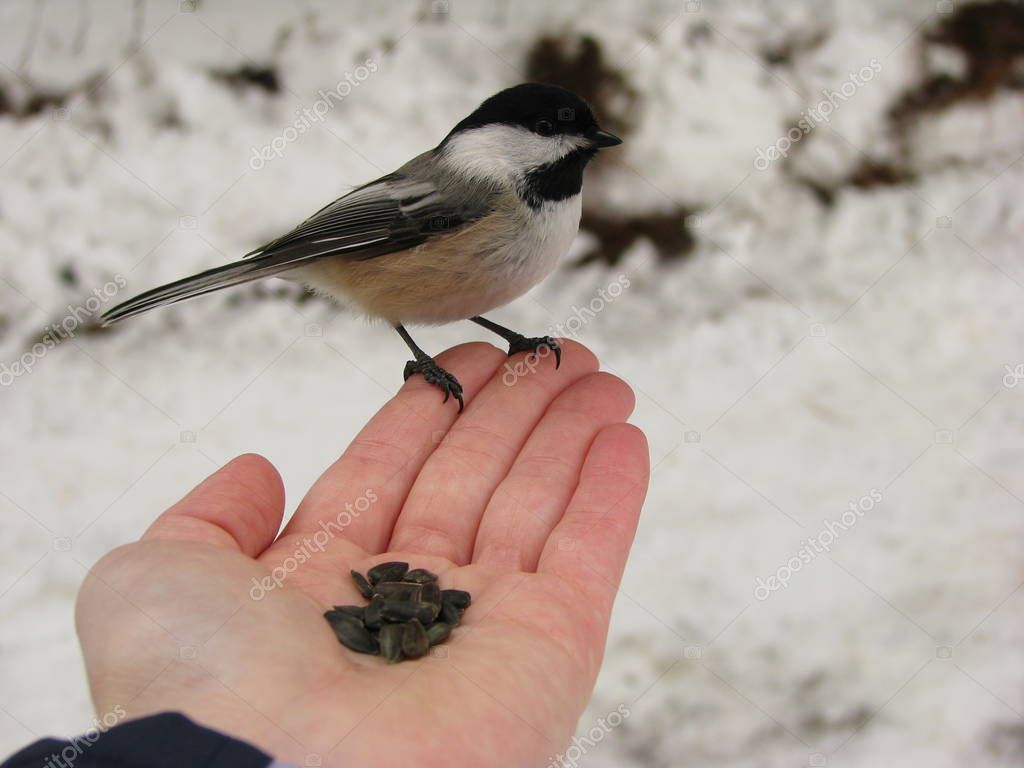 The chick itself does not know how to peck, but by 3-4 feeding it understands that it is required to open the "mouth".
The chick itself does not know how to peck, but by 3-4 feeding it understands that it is required to open the "mouth".
What to feed a titmouse chick? Its diet is no different from that of a sparrow. The only thing is that the tit chick may need mineral supplements and vitamins, which will have to be introduced along with the food. Chicks of tits are found less often; these birds hide their nests from people. It often happens that parents, frightened by people, lose a chick, and when the children find it, it is quite weakened.
Swallows are not returned to the wild
Children often bring little swallows home. These birds nest on the last floors of human dwellings and under balconies. What to feed the chicks of these birds? Swallows always feed on protein food, and therefore feeding swallows is no different from nursing sparrow chicks. But it must be remembered: if birds of other species during maturation are gradually transferred to grain feed and can leave hospitable hosts, a swallow fed in captivity does not return to freedom.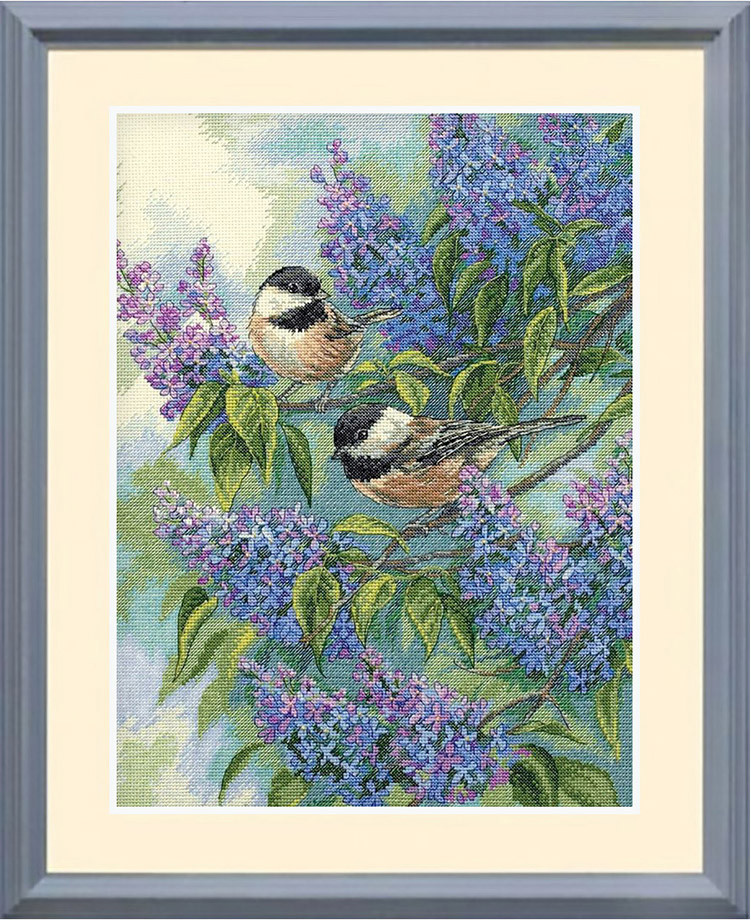 True, live food can be replaced with a surrogate as the bird grows older - transfer it to minced meat. It is enough to feed the swallow chick once an hour.
True, live food can be replaced with a surrogate as the bird grows older - transfer it to minced meat. It is enough to feed the swallow chick once an hour.
When it is clear what to feed the chicks, you need to clarify what to give them to drink and how? And most importantly, is it necessary? You can drip a couple of drops of water, introducing it further into the beak, from a pipette, but birds in the wild do not water their chicks - they have enough moisture from living food.
In order to prevent children from bringing small birds home, parents should explain to the child that fledglings - most often children bring chicks that themselves flew out of the nest, not yet fully fledged - flew out of the nest and waited for their mother, who would fed and cared for. And you don’t need to bring such chicks home, it’s better to return them to the same place so that their parents can find them. At home, feeding a chick is quite difficult.
How to feed tits at home.
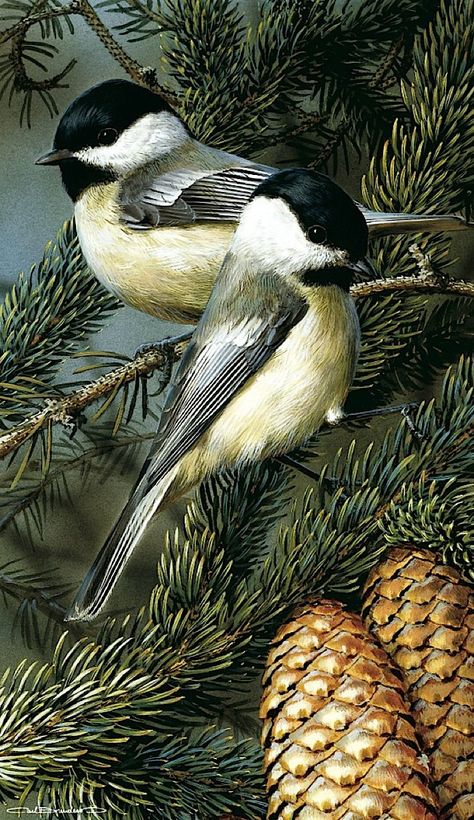 LET'S FEED TITS
LET'S FEED TITS A titmouse began to fly to my balcony, I fed it, and now five cute birds live on my balcony every day
When I have the opportunity, I watch them, this is a very interesting sight.
It turns out that these are such curious birds that there is no place on the balcony where they would not look.
They sit close to the window, stick out their head and try to look into the room through it.
Titmouse appear on my balcony very early in the morning, and fly away when it is already completely dark. You start to get used to them and every day you wait
Usually tits arrive in cities from the forest after November 12th.
In autumn they are a few shy tits, but by December all the surrounding feathered living creatures know where to feed and fly to the cities
Why is it important to feed the titmouse?
Pigeons and sparrows are common birds of the city.
They won't disappear themselves, they know how to earn their living in the city.
Tits are forest birds, and they are insectivorous.
Only fatty, high-calorie foods are suitable for them, and even then not any.
It is much more difficult for them to find food in winter.
Out of 10 tits, because of hunger, only 2 survive until spring (and in frosty winters 1-2).
Out of 10 sparrows, 10 will survive until spring (like the raven, like the doves). .
Forest birds do not know how to eat from garbage dumps, like pigeons and sparrows.
They either destroy pests, or - if there are no pests - they die.
That's why it's so important to feed them in winter: so that they live until the next spring.
Birds need to be fed regularly, because they get used to and wait, losing precious minutes that could be spent looking for food.
These are very useful birds.
Especially for those who have their own house and garden.
Do not drive away the titmouse, if it has settled with you, feed it, it will definitely answer you kindly
In places where there are feeders, titmouse simultaneously collect all wintering insects on trees, bringing great benefits to the gardener.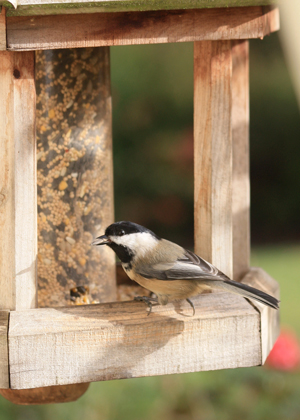
By the way, it is advisable to keep extensive hedges in the country house and near houses - birds will be happy to settle in them.
You can decorate summer cottage bushes and feed birds with delicious garlands — string nuts, berries on threads and hang these necklaces on branches.
What to feed the titmouse?
Millet and crumbs are not suitable for bird food - they are low-nutrient and tasteless, it's like putting people on a diet of crackers.
You can cook such a tasty and nutritious dish: melt a piece of fresh lard, add sunflower, melon, pumpkin, watermelon seeds, lightly crushed walnuts, peanuts, raisins, dry cherries, hop cones, chokeberry, freeze it
Delicious nutritious food is ready.
If there is no time to do this, you can give the birds all of the above seeds, unroasted seeds and nuts, grated hard-boiled egg yolk, butter and unsalted bacon (in weather -5 and colder), lightly salted cheese, cut into small cubes ( with a side of 3-5 mm).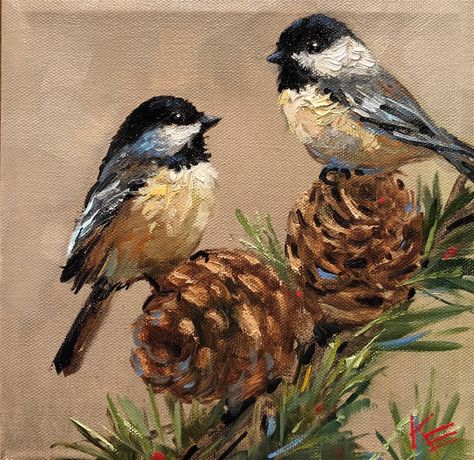
Nutcrackers, woodpeckers will not refuse pieces of bacon hanging on twigs - unsalted raw pork. Salty lard makes birds' stomachs hurt. If you grow sunflowers, it would be nice to prepare a few heads and hang them out in the winter.
It's not too late to make a "house for a titmouse"
The simplest feeders are not at all difficult to make, it will take only a couple of minutes.
For example, take large juice bags (plastic bottles are also suitable), cut a square hole about 6 by 8 cm in size on the side, leave a 1 cm high edge on the bottom so that the food does not spill out. From above you make holes with sharp scissors, thread the rope - and that's it.
Feeder ready
Feeder options
To attract the attention of birds, you need to scatter seeds around on the snow, and hang a piece of unsalted or buttered lard, cheese nearby.
It is most convenient to hang the resulting house directly on the window or on the balcony, but then only tits will fly to you.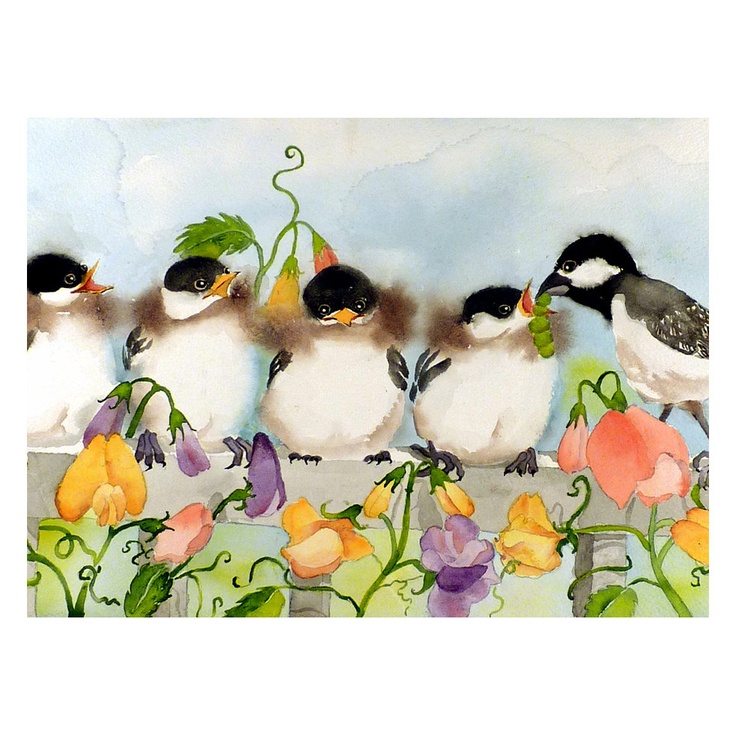
To admire the variety of birds, it is best to hang a bird feeder in the trees.
What does a tit chick look like. Tit chick: what does it look like and how to feed it?
Tits are one of the most common birds in our country. They are easy to find not only in forests and fields, but also in any city. Pay attention to a bird the size of a sparrow with a lemon-yellow breast, snow-white cheeks and dark blue wings - this is the very titmouse. These birds are sedentary, in autumn they rarely fly away, preferring to spend the winter near human habitation.
If you want to feed the tits, hang a piece of bacon outside the window in the feeder and sprinkle bread crumbs - the tits will be right there. But in general, these birds are insectivorous, and in wildlife their diet consists of all kinds of insects.
But what to do if a tit chick has fallen into your hands? These birds breed twice a year. The first clutch appears in April, and the second - at the end of June.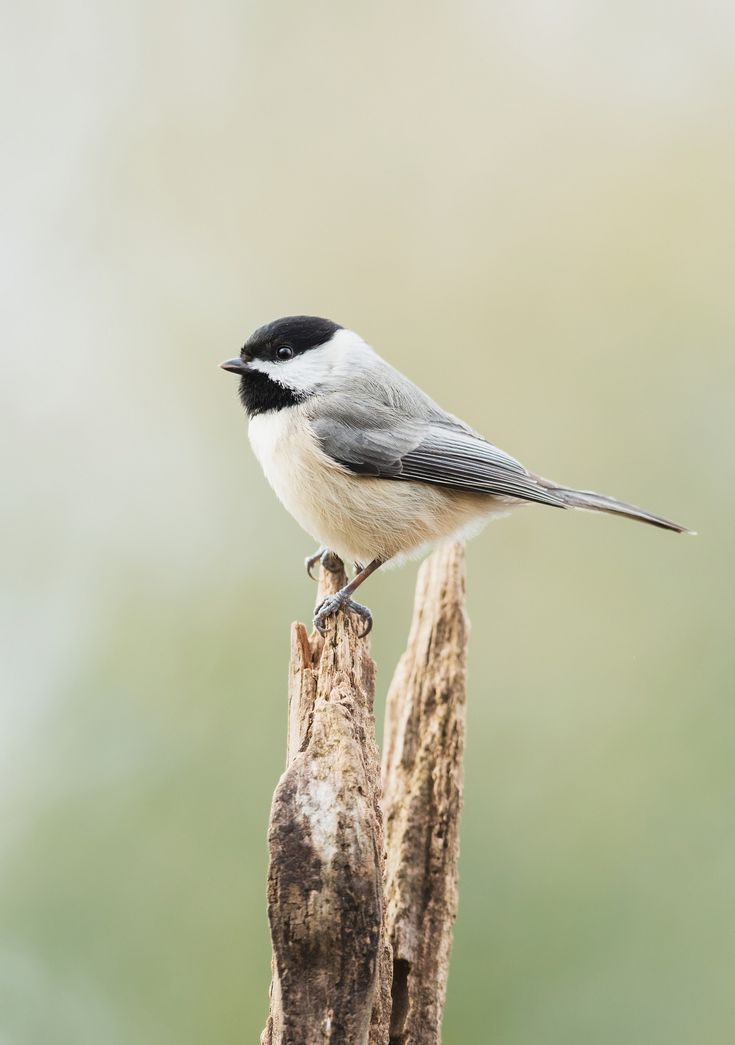 Cubs grow quickly, and most often in spring and summer under the trees, here and there, a chick of a titmouse can easily be found - a fledgling. That is, the one that fell out of the nest, but has not yet learned to fly. How to distinguish it? A tit chick (you probably saw a photo of such a creature of nature) is generally similar to its adult counterparts - the same yellow breast with a dark stripe in the middle will easily help to distinguish it from other birds. Unless the color of the wings of young titmouse is not as bright as that of adults, and the plumage is softer, since it has not yet had time to change from baby fluff to real feathers. What to do with it?
Cubs grow quickly, and most often in spring and summer under the trees, here and there, a chick of a titmouse can easily be found - a fledgling. That is, the one that fell out of the nest, but has not yet learned to fly. How to distinguish it? A tit chick (you probably saw a photo of such a creature of nature) is generally similar to its adult counterparts - the same yellow breast with a dark stripe in the middle will easily help to distinguish it from other birds. Unless the color of the wings of young titmouse is not as bright as that of adults, and the plumage is softer, since it has not yet had time to change from baby fluff to real feathers. What to do with it?
Remember that if you are ready to take responsibility for a chick, then this is for life. If you, having played enough of a rescuer, fed the chick and kept it in a cage for at least a couple of days, decide to release it into the wild, with a high degree of probability it can be argued that it will die.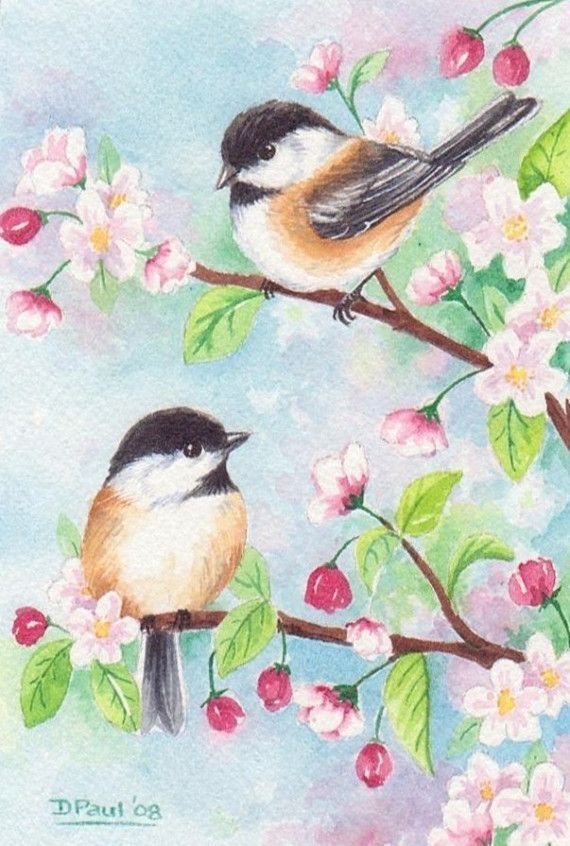 At the same time, the content of the tit chick is completely unpretentious. It can be kept in a cage, but do not expect the bird to become tame - tits are very poorly socialized, remaining rather wild for the rest of their lives.
At the same time, the content of the tit chick is completely unpretentious. It can be kept in a cage, but do not expect the bird to become tame - tits are very poorly socialized, remaining rather wild for the rest of their lives.
By the way, these birds are often valued among canary breeders. The last birds adopt the chirping style of tits, and songbirds with this skill are especially respected. Therefore, sometimes they are placed in cages with canaries as a “singing teacher”.
How to feed a tit chick? It is best, of course, that the diet of the bird is the food that it would eat in wildlife. The best option is insects. But if this is not possible, then tits, like other representatives of songbirds (and ornithologists attribute them to this species), can be supplemented with grated boiled egg, parsley, lettuce, pre-chopped, non-acidic cottage cheese. It is most convenient to do this with tweezers. It is important to ensure that the tit chick opens its beak on its own when feeding.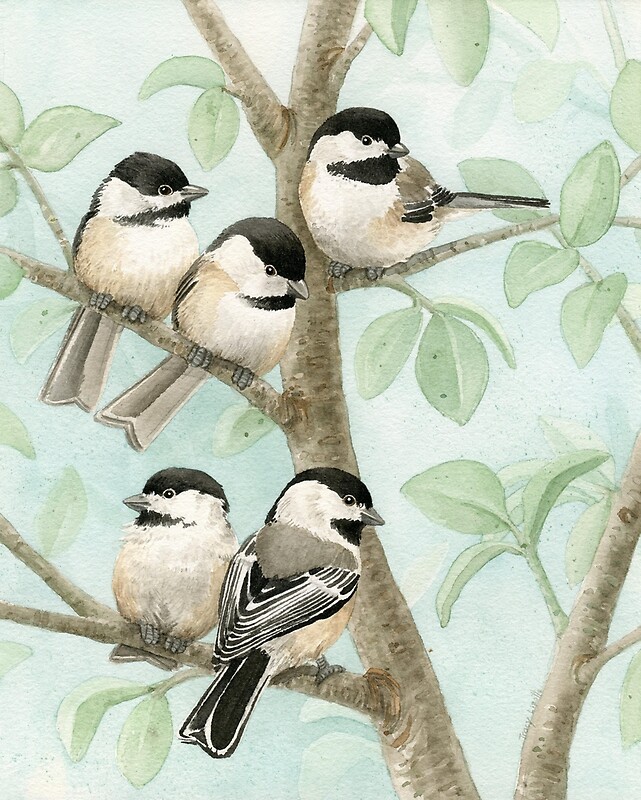 You can and should only feed the chicks with boiled drinking water. Caring for them is generally similar to caring for canaries, and therefore, as soon as you make sure that you have adjusted the nutrition of your new ward, consider that half the battle is already done. It remains only to feed, water, remove waste from the cage in time, and your bird will feel just wonderful and delight you with a cheerful blue tweet.
You can and should only feed the chicks with boiled drinking water. Caring for them is generally similar to caring for canaries, and therefore, as soon as you make sure that you have adjusted the nutrition of your new ward, consider that half the battle is already done. It remains only to feed, water, remove waste from the cage in time, and your bird will feel just wonderful and delight you with a cheerful blue tweet.
What grains can be fed to titmouse. What is recommended to feed tits in winter
As the most intelligent creature on the planet, a person must take care of his environment: fauna and flora. Birds are especially in need of such care in harsh and snowy winters. What to feed tits in winter and how best to do it, teachers often tell elementary school children in the classroom. But it will also be useful for adults to remember that at this time a significant number of wintering birds die from a lack of food and warmth.
Bird feeders
Feathered creatures are warm-blooded creatures that need good nutrition to maintain body temperature (+40 C). If things go badly with nutrition, then the body of the pichug will begin to cool down. The instinct of self-preservation and hunger drive the birds in search of food.
If things go badly with nutrition, then the body of the pichug will begin to cool down. The instinct of self-preservation and hunger drive the birds in search of food.
Compact feeders for titmouse and sparrows can often be found in the yards of sleeping areas and parks. Similar constructions are organized on their balconies by caring citizens.
Bullfinches, sparrows, titmouses, goldfinches, jays flock to the feeder to eat. Often in large feeders you can meet uninvited and arrogant guests - crows, jackdaws.
Bird canteens can be made by hand or purchased from a pet store. The simplest design is a plank with a roof that protects from natural precipitation, suspended from the corners of a rectangle. There are also creative ideas for creating places for feeding birds from improvised material. For example, from a milk package, a plastic container, cans.
Optimal bird diet
There is a question about the bird menu. If everything is clear with the diet of wild pigeons, it is worth learning more about the optimal filling of feeders for smaller birds.
Feathered creatures are not neat. They tend to defecate while eating. That is why you should not pour a lot of food into the feeder at once, which can be spoiled very quickly. Also, do not mix feeds of different structure. For example, meat or lard should not be given along with cottage cheese.
The best food for birds is a special complex mixture, which should be purchased from specialized pet stores.
The complex composition includes seeds:
- sunflower;
- millet;
- oats;
- wheat.
Additionally, rowan fruits and bread crumbs are introduced into the bird's diet. In addition to mountain ash, you can give the birds viburnum and hawthorn berries.
If most birds are completely satisfied with such a diet, then such miniature birds as titmice should be additionally fed with fatty animal food. High-calorie food quickly saturates the tits and gives them more strength. Fat and meat act as animal and fatty foods.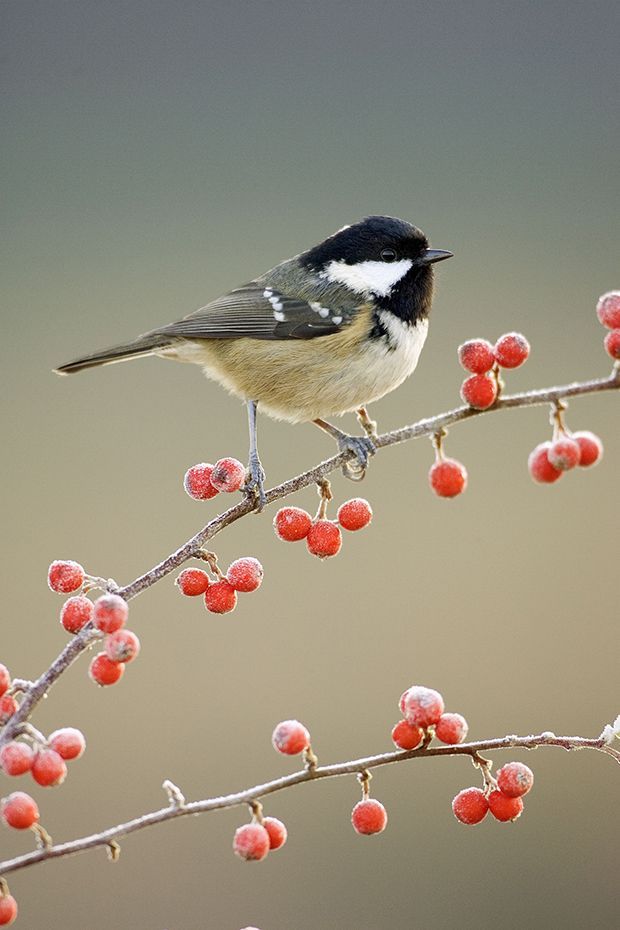 In order for the birds not to swallow large pieces, but to peck food gradually, it is recommended to string the pieces on a string in the form of beads and hang them near the feeder.
In order for the birds not to swallow large pieces, but to peck food gradually, it is recommended to string the pieces on a string in the form of beads and hang them near the feeder.
In addition, it is not necessary to encourage the development of laziness in feathered individuals. After all, if the feeders are always full of grain, they will not strain and look for a worm under the bark of trees or pick up seeds on the surface of the soil. Such conditions dull the instincts of these creatures and make them lazy and careless.
Forbidden food
Each order of birds has its own preferences. Sparrows with pigeons rarely refuse grain, and tits love seeds and lard. Birds need to be fed properly. The first rule to follow is to exclude salty foods from the diet. The peculiarity of the structure of birds is that their excretory system cannot cope with excess salt and provokes poisoning and death of birds.
Roasted sunflower seeds are banned because they can cause liver disease. In addition, wild birds should not be given black bread and millet. Millet can become a source of toxic substances, and black bread can cause fermentation in the intestines.
In addition, wild birds should not be given black bread and millet. Millet can become a source of toxic substances, and black bread can cause fermentation in the intestines.
In addition to salty foods, do not put citrus fruits, banana peels, sour or spicy foods in the feeders.
Ordinary chewing gum is specifically prohibited. Pichugi, taking chewing gum for a tidbit, peck at the discarded gum and die from a paralyzed digestive tract.
Permissible seeds and cereals
For urban birds, the usual cereals can be considered as food. Going outside, there is no need to wonder if the birds eat rice. You can safely take a bag with millet, wheat, rice and oats with you.
In addition, birds will not refuse seeds of such vegetable crops:
- watermelon;
- gourds;
- melons;
- corn;
- sunflower.
Forest birds love cone seeds and acorns. If, going for a walk, a person took with him a small piece of white bread, then before feeding the birds, you need to crumble it.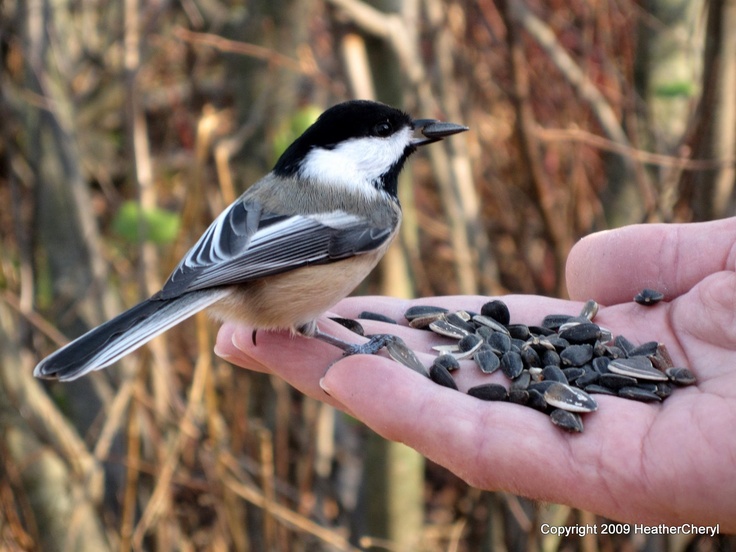
Additionally, birds can be added to the feeder and crushed eggshells, which will become a source of calcium for them. Chopped apple pieces, cottage cheese, small pieces of raw beef can also be added to bird feeders.
Domestic tit | My pets
Titmouse can be pet birds You found a titmouse in the park and, succumbing to a moment of pity, brought the bird home, and now you understand that you can't just let it go free? Or maybe your children brought the bird home? It doesn’t matter how the tit got into your house, but you clearly weren’t ready for it to appear there, therefore, now you are wandering the Internet in search of answers to your questions about keeping these birds at home (by the way, here you can read about how to keep budgerigars at home, about their types, and about the behavior of these birds). Well, finally you can exhale calmly - in this publication you will learn everything you need to know about keeping tits at home, about what to feed them, how to equip a cage for them .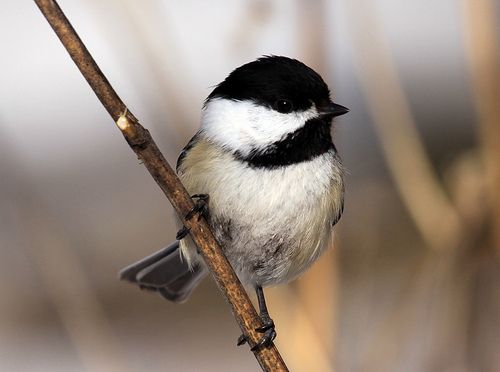 ..
..
Who knows, perhaps the appearance of this bird in your house will bring you good luck, and our article will help you take care of it properly ...
What a tit looks like house, we suggest starting our article with an acquaintance with its appearance. So, these are quite beautiful birds, the back of which is yellowish-green, the abdomen is covered with yellow plumage with a wide black stripe along the chest - it is called a “tie”. In males, such a tie becomes wider as it approaches the stomach, while in females, on the contrary, it narrows towards the bottom. The titmouse has white cheeks and the back of its head, but the rest of the plumage covering its head is black and shiny. The wings and tail of the bird are bluish in color, they have light transverse stripes. On the back you can see a bluish-gray color, but the plumage of the abdominal part is white.
The body length of the titmouse is 14-15 centimeters, however, there are also smaller titmouse.

With good care in captivity, a tit can live up to 5-6 years.
Songbird titmouse
This is what a tit looks likeIf you did not know about it, then the statement that tits, in particular males of this species, are songbirds, and not only a canary, but also a goldfinch can envy the vociferousness of their trills - will be a pleasant discovery for you. So the bird you found might not be so useless after all. True, despite the fact that the male tits are singing, they are still not sold in pet stores. The sellers themselves explain this by the fact that
The nature of these birds is conflicting and quarrelsome, they often quarrel and fight with other birds, therefore, it is impossible to keep them in the "company".
How can you tell a male from a female? Very simply, the male bird has a dark tie in the form of a strip that descends from his chest to his stomach, the female also has it, but not so wide.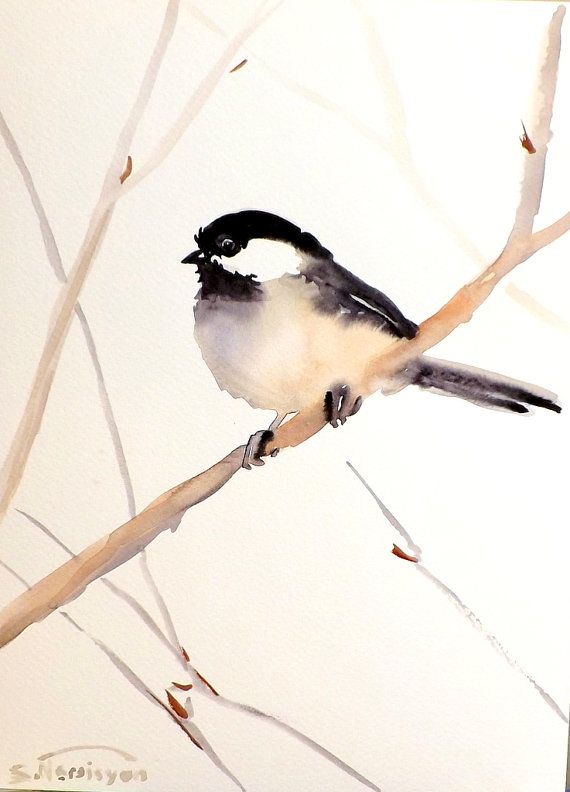 Therefore, just pay attention to the width of such a “tie”, if you have something to compare with, and make your own verdict, who is in front of you - a male or a female.
Therefore, just pay attention to the width of such a “tie”, if you have something to compare with, and make your own verdict, who is in front of you - a male or a female.
If a male can become a songbird for you, then a female will simply delight your eyes…
By the way, male tits sing especially beautifully in spring, when their mating season begins. At this time, their song is inviting notes. Moreover, it turns out that tits are used to teach canaries the so-called oatmeal tune, which is very highly valued for titmouse knees in songs (more on how to teach a canary to sing) ...
Peculiarities of keeping tits at home
Cage for chickadee
We have already mentioned that these birds have a conflicting nature, so it is better to keep them in a cage one at a time. Also, do not plant tits with other birds - they will begin to conflict, and as a result of the fight, they can injure each other. Therefore, immediately take care of a separate housing for the bird. It must be spacious enough - cage dimensions must be at least 45 centimeters by 30 centimeters by 40 centimeters . In principle, there are no other special requirements for a titmouse cage - it must be convenient in terms of cleaning, reliable and durable.
It must be spacious enough - cage dimensions must be at least 45 centimeters by 30 centimeters by 40 centimeters . In principle, there are no other special requirements for a titmouse cage - it must be convenient in terms of cleaning, reliable and durable.
The place for the cage should be chosen in such a way that direct sunlight does not fall on it and it does not stand in a draft, and is away from electric and gas appliances.
What to feed your tit at home
Luckily, titmouse are omnivorous birds, so you shouldn't have any problems with preparing their diet in captivity. The basis of their menu should be soft food, which may consist of grated carrots mixed with white breadcrumbs, with the addition of non-fat cottage cheese and minced meat or fish, as well as chopped chicken eggs. In such soft food, you can mix gammarus, ant eggs, dry insects.
By the way, all tits love mealworms, so if you treat them to such a delicacy every day, giving them several pieces of worms, the titmouse will be very happy about it.
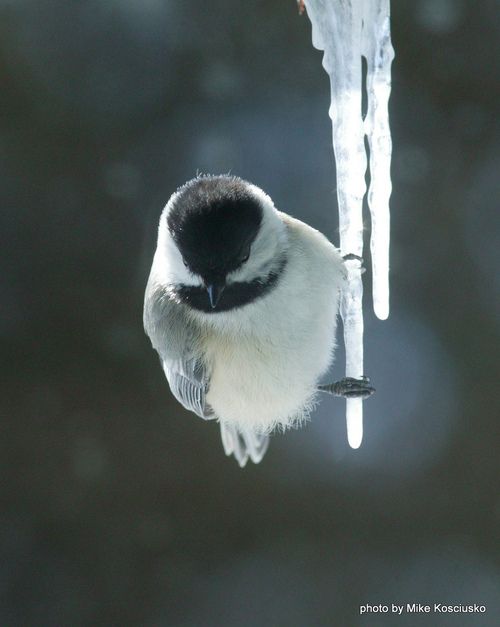
Birds can also be given crushed hemp, unroasted sunflower seeds, broken pine nuts and walnuts. At the same time, nuts should be peeled and chopped, as the birds themselves do not know how to do this. And, here the grain mixtures need to be poured into separate feeders for tits, without mixing them with soft food.
Birds should always have access to clean water, and there should be 2 containers - one for drinking, and the second ... for bathing. Yes, tits love to take water treatments, so be sure to take care of an additional water tank if you do not want the tit to bathe in a drinking bowl.
It is worth feeding the tits 2 times a day, in the morning and in the evening, pouring enough food for the bird so that it can eat it all. Remaining food should be removed so that you can add fresh food in the evening.
By the way, if you let a titmouse out of its cage, then be prepared for the fact that it will take care of its own diet on its own, to the point that it can open a package of milk or steal a gingerbread from the cupboard .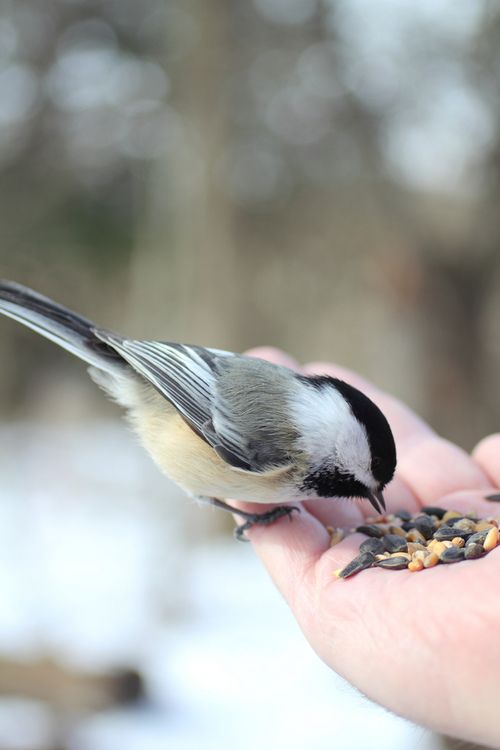 .. These birds have excellent eyesight , so it is not surprising that in nature, when adult tits feed their chicks, they even bring them insect eggs, which cannot be seen at all without a magnifying glass. So, be sure, the tit will definitely not miss the gingerbread.
.. These birds have excellent eyesight , so it is not surprising that in nature, when adult tits feed their chicks, they even bring them insect eggs, which cannot be seen at all without a magnifying glass. So, be sure, the tit will definitely not miss the gingerbread.
As for whether it is possible to give lard or meat trimmings to tits, you can occasionally pamper your bird with such a delicacy. To do this, hang a piece of unsalted fat on a thread at the top of the cage and be sure that your tit will have work for the whole day.
How to tame a tit to hands
Variant of a cage for a tit In principle, as experience shows, tits quickly get used to hands and become tame. True, for this they need time. Therefore, if you found and brought a bird home, then in order for it to get used to the new atmosphere and not try to break free from the cage, it is recommended to cover the cage with a white cloth for the first 2-3 weeks and put it in a room where there is no noise and loud noises are not heard. When the bird adapts to life in a cage, the fabric can be removed. Now you can no longer worry about the fact that the titmouse will be able to damage its plumage and beak, trying to escape from the cage.
When the bird adapts to life in a cage, the fabric can be removed. Now you can no longer worry about the fact that the titmouse will be able to damage its plumage and beak, trying to escape from the cage.
Once the bird has settled into its new home, you can start working on getting it used to you. To do this, put a few seeds on the palm of your hand and gently opening the cage doors, invite the tit to take them from your palm. At first, the feathered pet will behave wary, but then, making sure that you do not pose a threat to it, it will definitely take the seeds. Try not to make sudden movements at this moment and do not speak loudly so as not to frighten away the first confidential contact.
After that, the bird will gradually get used to you, and you will be able to pick it up. That's just, let the titmouse out of the cage, no matter how tame it is - we would not recommend it to you. There is always a high probability that she will remember her wild roots and try to break free through an open window or window.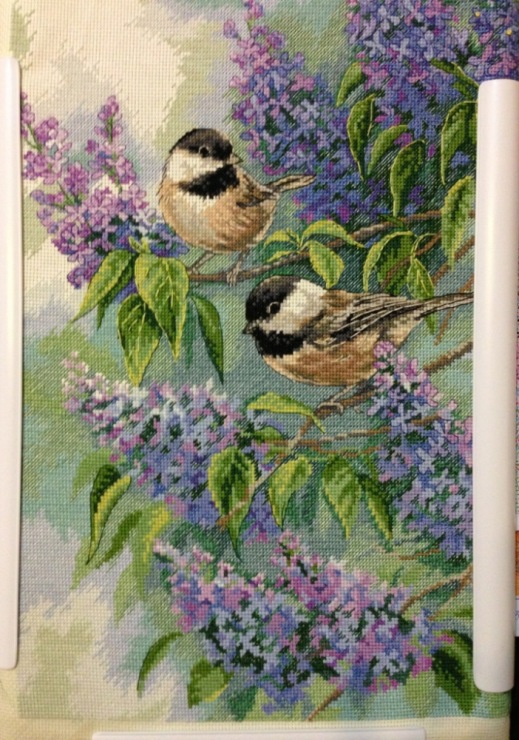 Even if they are closed, the titmouse can start beating out the window and injure its wings. Therefore, it is better to buy a spacious cage for her, in which she can fly, than to take risks every time, releasing her into the wild.
Even if they are closed, the titmouse can start beating out the window and injure its wings. Therefore, it is better to buy a spacious cage for her, in which she can fly, than to take risks every time, releasing her into the wild.
Breeding chickadees at home
If you are going to breed chickadees at home, you should keep the pair in a large cage or aviary, and there should be no other birds in the room. Given the complex and conflicting nature of these birds, it is not uncommon for a male to begin to sort things out with a female, therefore, if you see that the birds begin to conflict, it is better to seat them for a while. When the male begins to sing his spring calling songs, they can again be tried to be brought together in one cage. The best time for this is April. At the same time, it will be possible to place a nesting house in the cage and put building material for the nest, so that a pair of titmouse begins to think about offspring.
Diseases of tits
Tits are prone to diseases that affect other species of birds. Moreover, if a bird was given into your hands (we are talking about found titmouse) - this is already a signal that something is wrong with it. Of course, it is best to show it to the veterinarian, especially if other birds live in your house, so that your good deed does not cause a massive bird epidemic. If this is not possible, put the bird in a separate cage, arranging quarantine for it, use different accessories to care for it and other birds.
Moreover, if a bird was given into your hands (we are talking about found titmouse) - this is already a signal that something is wrong with it. Of course, it is best to show it to the veterinarian, especially if other birds live in your house, so that your good deed does not cause a massive bird epidemic. If this is not possible, put the bird in a separate cage, arranging quarantine for it, use different accessories to care for it and other birds.
You can read more about diseases of other poultry that your titmouse can suffer from here.
Video about tame chickadee
Today we talked about keeping chickadees at home, what to feed these birds in captivity, and how to properly care for them, how to tame them in your hands ... In any case , no matter how caring owner you become for her, if we are talking about a bird you found, then the most comfortable conditions for her are the conditions of her natural habitat.